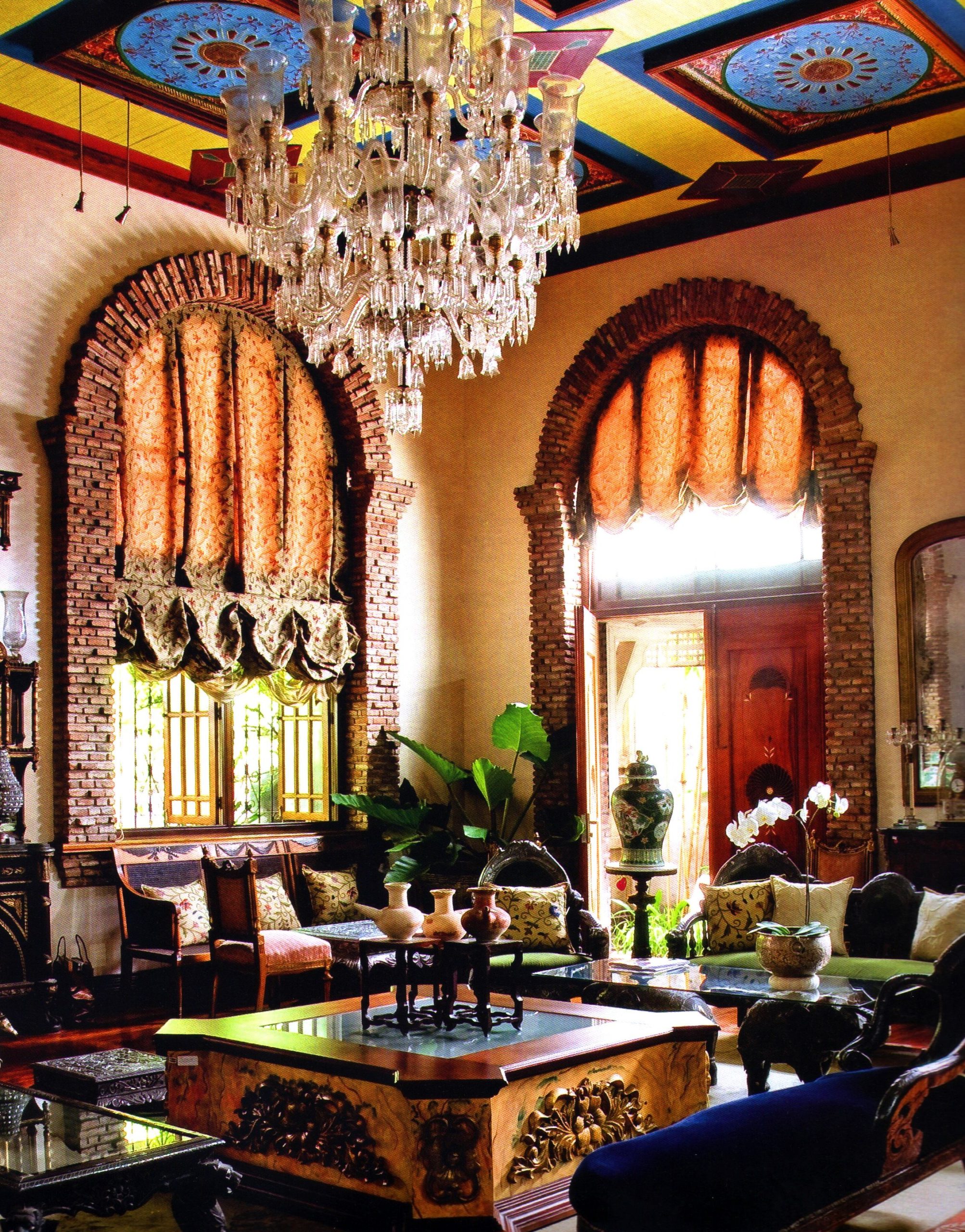Step into the captivating world of Modern Filipino Interior Design, where traditional warmth meets contemporary elegance. This vibrant style seamlessly blends indigenous materials, vibrant textiles, and cultural symbolism, creating spaces that are both visually stunning and deeply meaningful. This comprehensive guide explores the key elements that define Filipino interior design, providing inspiration for transforming your home into a haven of cultural richness and modern sophistication.
Filipino Interior Design: Where History Meets Cool Vibes
Imagine a space that feels instantly welcoming, bathed in natural light, and adorned with natural textures. This is the essence of Filipino interior design—a harmonious fusion of modern aesthetics and time-honored traditions. Inspired by the “Tropical Modern” aesthetic, Filipino interiors embrace open spaces, airy designs, and an abundance of natural light, creating a refreshing and inviting ambiance.
Crafted from locally sourced materials like narra wood, bamboo, and shimmering capiz shells, Filipino furniture and decorative accents embody the country’s rich natural heritage. Each piece, often handcrafted by skilled artisans, tells a story of tradition and craftsmanship passed down through generations.
Beyond their visual appeal, these elements serve functional purposes. Capiz shell windows, for instance, not only add a touch of elegance but also diffuse soft, ambient light throughout the room. Intricately carved furniture often conceals hidden storage compartments, seamlessly blending beauty and practicality.
What Defines Filipino Interior Design Style?
Filipino interior design is characterized by a unique blend of nostalgia, warmth, and resourcefulness, evident in every aspect of the design.
Key Characteristics:
- Sustainable Materials: The use of natural and sustainable materials, such as wood, bamboo, and capiz shell, reflects a deep respect for nature and a commitment to preserving Filipino craftsmanship.
- Honoring Traditions: The incorporation of indigenous patterns woven into textiles, hand-carved furniture passed down as family heirlooms, and religious icons displayed with reverence speaks to the importance of family and heritage in Filipino culture.
- Seamless Indoor-Outdoor Living: Inspired by the traditional “bahay kubo” (Filipino stilt house), modern Filipino homes often feature open living spaces that promote ventilation and connect seamlessly with the outdoors.
- Warm and Inviting Color Palettes: Earthy tones like beige, cream, and brown create a sense of calm and comfort, while vibrant textiles, traditional artwork, and hand-painted pottery introduce pops of color and personality.
Key Elements at a Glance:
| Element | Description |
|---|---|
| Values | Nostalgia, warmth, resourcefulness |
| Materials | Wood, bamboo, capiz shell |
| Influences | Indigenous patterns, sentimental pieces, Spanish colonial architecture |
| Symbolism | Meaningful objects, “bahay kubo” inspiration |
| Colors | Neutral hues, vibrant accents |
More than just aesthetics, Filipino interior design evokes a feeling—a sense of belonging, comfort, and connection to Filipino culture.
Exploring Key Elements: Materials
Materials are the building blocks of Filipino interior design, shaping the overall mood and telling a story of cultural heritage and sustainable living.
- Embrace Natural Beauty: Rattan, bamboo, and capiz shell aren’t just trendy materials; they are integral to Filipino design, adding warmth, texture, and a touch of local charm.
- Blend Old and New: Filipino design seamlessly fuses traditional and modern elements. A sleek, minimalist sofa might sit alongside a hand-carved wooden chest, creating a dynamic interplay of old and new.
- Prioritize Light and Air: Large windows, light colors, and open floor plans maximize natural light and ventilation, creating a refreshing and airy atmosphere reminiscent of the tropics.
- Infuse Cultural Identity: Vibrant textiles, handwoven rugs, and wall hangings adorned with traditional patterns add pops of color and personality, reflecting the rich cultural tapestry of the Philippines.
Colors: The Heart of Filipino Interior Design
Color plays a vital role in Filipino interior design, capturing the vibrancy and natural beauty of the islands.
- Embrace Nature’s Palette: Earthy browns and greens, reminiscent of lush forests and rice paddies, create a sense of peace and tranquility. Soft whites and beiges provide a neutral backdrop that allows natural materials and textures to shine.
- Infuse Joyful Accents: Bold hues of red, yellow, and orange, often inspired by traditional Filipino textiles like piña and hablon, inject energy and personality into the space.
- Find Balance with Modern Neutrals: Gray, white, and beige provide a contemporary counterpoint to traditional elements, creating a harmonious balance between old and new.
Need some design inspiration for your food store? Get your creative juices flowing with our French colonial interior design ideas. You can even invest in a garage interior designer to transform your space into something truly special.
- Does 100% Polyester Shrink? A Complete Guide to Washing & Drying - April 16, 2025
- Elegant Drapery Solutions for Arched Windows: A Complete Guide - April 16, 2025
- The Best Dining Room Tables with Drop Leaves: A Buyer’s Guide - April 16, 2025










